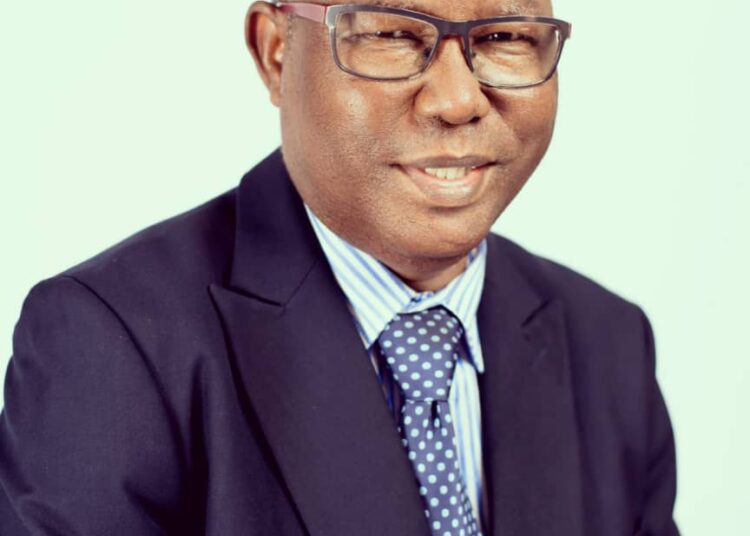We are all familiar with the timeless observation of the Greek philosopher Heraclitus: “The only constant in life is change.” Change, as paradoxical as it may seem, is a force of both disruption and progress. George Bernard Shaw captured this duality when he said, “Progress is impossible without change,” yet we often witness individuals and institutions resist it, sometimes fervently, even at great personal cost. As Winston Churchill once remarked, “To improve is to change,” highlighting the irony that change, while essential, often breeds tension, fear, and inertia.
This dynamic tension means that navigating change, especially within complex systems like the public sector, requires not only vision but also adroit and strategic management. Successfully managing reform entails balancing the pursuit of improvement with mitigating its often painful consequences. Nowhere is this more evident than in Nigeria’s public sector, where reforms must contend with entrenched interests, bureaucratic inertia, and socio-political complexities, including deep-seated ethnic and religious loyalties.
The Strategic Role of Change Management
Change management, or reform management, in public sector parlance, is therefore not optional. It is a core component of any reform process. This is where the Aig-Imoukhuede Foundation has demonstrated strategic foresight. Recognising that Nigeria’s development challenges are both systemic and sector-specific, from health and education to infrastructure and justice, the Foundation has adopted an adaptive, context-aware approach to reform. Its model acknowledges the uniqueness of each sector, shaped by legacy systems, institutional cultures, and political economy constraints, and tailors its interventions accordingly.
This article explores the complexities of leading reform across various sectors in Nigeria. It examines:
1. Why some sectors are more politically or technically resistant to reform; 2. Common patterns of resistance or failure; 3. How successful reformers adapt to their contexts; and 4. Key lessons for future public sector reform efforts.
Drawing from the Aig-Imoukhuede Foundation’s work over the years, we consider how effective reform strategies have been conceived and implemented across Nigeria’s diverse sectors.
Macro vs. Sectoral Reforms
Understanding the varying difficulty of reform across sectors requires distinguishing macroeconomic reforms from sector-specific ones. In Nigeria, macroeconomic reforms are typically more politically charged and technically complex.
The 1986 Structural Adjustment Programme (SAP), introduced by the Ibrahim Babangida regime, is a case in point. While intended to correct economic imbalances, its poorly managed rollout, especially the lack of social protection, triggered unrest and enduring public resistance.
Universities became epicentres of dissent, and radical lecturers were targeted for removal. This turbulent period highlighted a critical lesson: reforms must be accompanied by strategic management of their social and economic consequences. Without such foresight, even well-intentioned reforms can falter or fail entirely.
The lesson is clear: success in public sector reform depends as much on managing its fallout as on the design of the reform itself. Reforms that focus on improving systems, processes, and service delivery, without threatening job security, tend to face less resistance. Moreover, reformers who anticipate and pre-emptively address the loss of privileges are better positioned to navigate resistance.
The Oronsaye Report: A Case Study in Stalled Reform
One of the most prominent examples of reform inertia in Nigeria is the 2012 Oronsaye Report on the restructuring and rationalisation of federal government parastatals, commissions, and agencies. Although successive administrations, from Jonathan to Buhari and now Tinubu, have all expressed interest in implementing the report, none have succeeded.
Why? Resistance was formidable, but the deeper issue was a lack of political will and strategic consensus-building. Ministers and union leaders, aligned in the protection of institutional “empires” and regional loyalties, formed a powerful coalition of resistance.
The national interest was sidelined in favour of preserving influence, status, and control.
While fears of job losses were often cited, the implementation of the Oronsaye Report need not result in mass unemployment.
There are more palatable, cost-saving alternatives, such as reducing board sizes, cutting unnecessary perks, and eliminating wasteful duplication of roles. Yet these common-sense reforms remain unimplemented due to the absence of courageous, consensus-driven leadership.
The challenge of multiple fiefdoms underlying these challenges is a more structural issue: the existence of multiple political and bureaucratic fiefdoms in Nigeria’s governance architecture. These fiefdoms, rooted in ethnic, religious, and personal patronage networks, undermine coherence, breed inefficiency, and obstruct reform.
They also distort recruitment, encourage data manipulation, and fragment policymaking efforts.
Leadership is critical in confronting this fragmentation. Fortunately, many of Nigeria’s permanent secretaries today have benefitted from capacity-building programmes, including the Senior Public Leaders Programme of the Aig-Imoukhuede Foundation. These leaders must rise to the occasion, not just as administrators, but as reformers working collaboratively across ministries and sectors.
Cross-sectoral collaboration is vital. A coordinated push, for example, to build digital infrastructure can transform institutional memory, streamline service delivery, and reduce duplication. But this can only happen if leaders act beyond silos and adopt a joined-up approach to governance.
Reform Through Inclusion
Ultimately, successful reform is not about imposing change, it is about co-creating it. This is another defining element of the Aig-Imoukhuede Foundation’s approach: engaging those who will be affected by reform from the outset. Reform must be done with people, not for them. This principle aligns with the saying that ‘something for us without us, neglects our sensitivity and tramples on our dignity.’
Inclusive reform processes increase ownership, reduce resistance, and improve outcomes. Involving stakeholders early, especially public servants who are the face of reform, builds the trust and momentum needed to sustain transformative change.
Conclusion
Navigating change in Nigeria’s public sector is complex, but not impossible. It demands strategic thinking, inclusive processes, and above all, courageous leadership. While political will remains a limiting factor, reformers must remember that success lies in managing both the aspirations and the anxieties that come with change.
By learning from both failed and successful reform efforts, and by investing in thoughtful, context-sensitive approaches, as exemplified by the Aig-Imoukhuede Foundation, Nigeria can advance reforms that not only endure, but deliver tangible improvements in the lives of its citizens.
_Obasi, a Research Consultant, writes from Abuja











